Speaking in a pre-match interview ahead of West Brom’s Premier League clash against Arsenal, Tony Pulis raised a few eyebrows with his response to a question about whether his West Brom side would set up in a back four or a back five. Pulis replied that it would be a mix of the two, “a swivelling back four”, a term seldom heard before within the tactics-phobic English media. In reality, it is actually quite a common and simple principle seen within many back five systems, and did well to nullify Arsenal’s build up play on Monday night.
WBA’s Central Focus
Pulis set his West Brom team up in a base 5-3-2 block which heavily focused on preventing Arsenal from building play centrally and forcing them to play wide, where it is inherently easier to press due to the presence of the touchline. The extra centre back in the defensive line helped to do this as well as the three screening midfielders further solidifying the middle. The front two were tasked with being the first line of defence, blocking central passing lanes from Arsenal’s back three into Elneny and Xhaka.
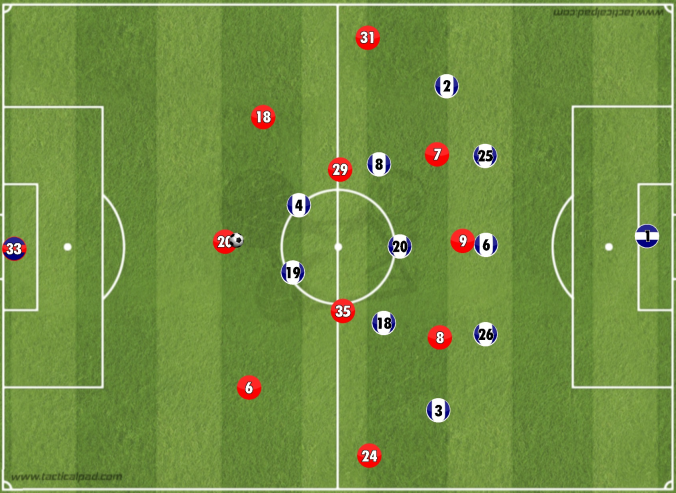
If the ball was in a wider position and the front two were not able to cover the passing lane, the central midfielders woulds step up to mark Arsenal’s near #8, once again preventing central progression, with the near centre back making sure the forward pass into the front line was not on either.
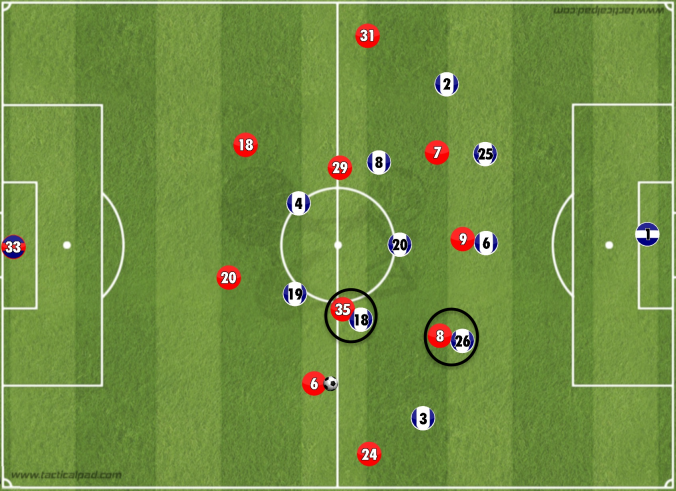
If Arsenal’s centre backs carried the ball forward into the West Brom half, that would act as a trigger for West Brom’s nearest central midfielder to go over to press with Krychowiak coming over to support by marking Arsenal’s near #8.
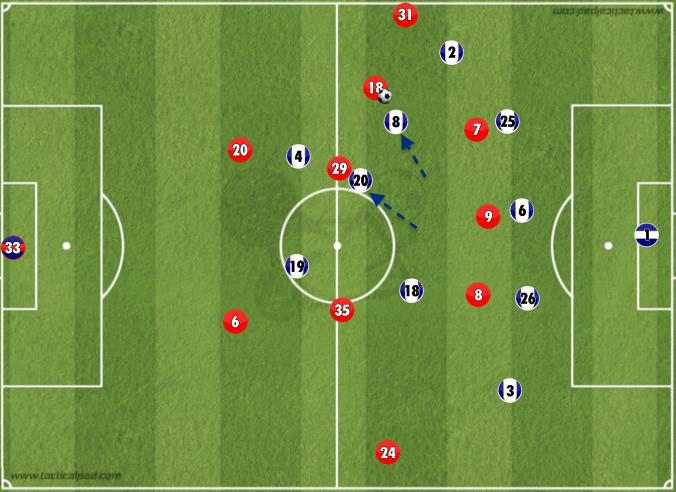
Pressing The Wing Backs
With all central options efficiently cut off by West Brom, Arsenal’s wing backs were frequent recipients of passes from the first line. This is where we saw the ‘swivelling four’ in action. Pulis spoke pre-match about “keeping the near side tight, allowing the far side to be loose.” He did this by asking the near wing back to step up to press Arsenal’s wing back as he received the ball. Behind him, the remaining defenders rotated round to provide cover and balance, creating a situational back four.
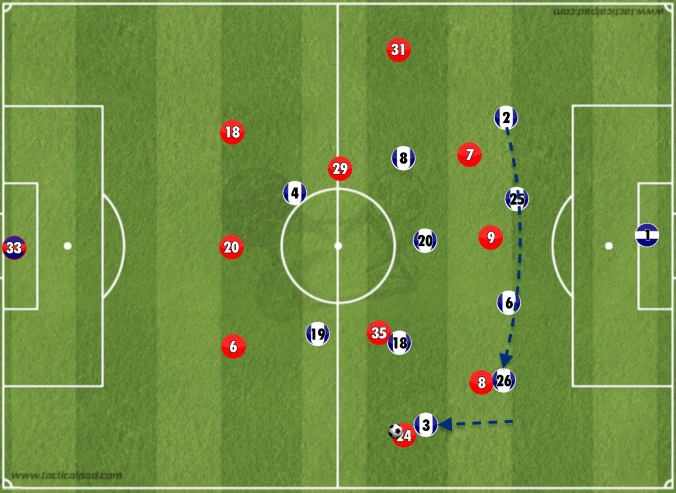
With the ball in a wider area, the situational back four was a better defensive structure as it gave West Brom’s players better access to press the ball and Arsenal’s nearest passing options. With Arsenal’s wing back receiving the ball in line with the midfield, it made sense for West Brom’s wing back to step up accordingly. Under pressure, the wing back was unable to turn and his sideways options into midfield were tightly marked, as well as the near-winger, thus forcing him to play backwards.
West Brom’s front two would use this shift in momentum to begin a press of their own, looking to force Arsenal further backwards to the goalkeeper and making them begin their build up again from scratch, and West Brom would reset, with the ball now back in the centre, into a back five. This pressing scheme, started off by the ‘swivelling’ movement of the defensive line, prevented Arsenal from penetrating their defensive block by allowing them to apply pressure to the player in possession and kept the ball in safe areas where Arsenal could not hurt them.
As well as looking to force Arsenal back into safe areas of the pitch, West Brom looked to use their strong presence on the near side to force turnovers through intense pressure on the ball. This also presented the opportunity to tempt Arsenal to play inside into the middle into seemingly open options, before quickly pressing as the ball travelled, something that was possible due to the compact nature of the team on the near side.
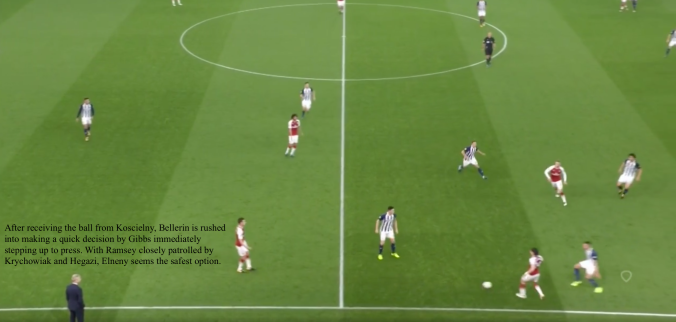
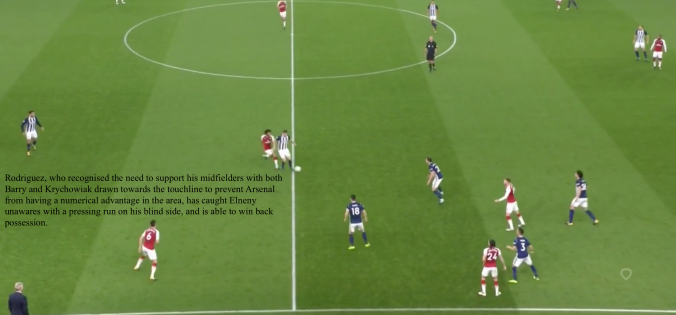
As the game went on, Arsenal tried different techniques to try and overcome this resilient defensive effort from the visitors. One frequent mechanism was to try and exploit the space on the underloaded far side, but the far West Brom wing back was usually able to use the time it took for the ball to travel across the pitch to get himself in a strong position to challenge for the ball. In the second half, after some advice in the dressing room, it was noticeable that Arsenal’s far wing back started from a deeper position, thus creating more of a gap between himself and his opposite number, giving him space to receive the switch of play.
Alexis Sanchez’s immense press-resistance was also a key tool for Arsenal to use to break the tight man-marking West Brom were deploying. Playing the ball into Sanchez’s feet with a man tightly marking him from behind was not a problem for the Chilean, and he was able to use his close control and body positioning to protect the ball well. This allowed him to either turn the defender, or try and play to a team mate who was facing forwards and could take a positive first touch to gain a dynamic advantage over his opponent.
Despite intermittent success, Arsenal were never really able to consistently progress play until West Brom dropped their defensive line a bit deeper as the second half went on and put less emphasis on stopping Arsenal’s build up, probably to account for tiring legs. It is telling that Arsenal’s two goals came from a penalty and a free kick, and Pulis’ game plan was, on the whole, pretty effective against a side that had scored seven goals in their previous two home league games.